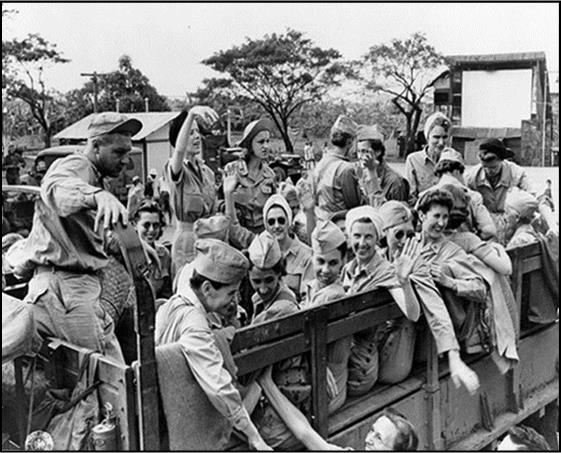Women and war. Once an absolute unmentionable topic of conversation, but since over half of the world’s population is made up of women, it is a reality that cannot be ignored. Women have been noted in the wages of war not just as casualties, war supply assembly line workers, officers’ wives, and field nurses, but their roles as survival strategists and prisoners of war have been largely undocumented.

One such group is the women of Bataan during WWII, imprisoned by the Japanese and victims of incredible cruelty and hardship. Some enlisted for adventure, others for loyalty to their country. In 1930s America nursing was still strictly a woman’s profession. The requirements were a high school diploma and additional training through a hospital diploma program. Mobility in the career involved longevity and performance. The varying levels of career options that exist today from an LPN to Doctoral level were not available. Once married, nurses were asked or required to leave the profession. As a military nurse there were opportunities to see the world and as the times required, perhaps find a husband in a handsome young officer. One such adventurous nurse was Maude Campbell Davidson, Canadian by birth, who as an Army captain, took over the position of Chief Nurse in the Philippines in July of 1941. She was responsible for all nursing activities throughout the Philippine Galapagos but ended up stranded in Bataan and Corregidor.
In her book, We Band of Angels, Elizabeth Norman documents through interviews, letters and diaries how the legacies of Florence Nightingale and Clara Barton flourished in the spirit of dedication exhibited by these American nurses. She states,” These were the first doc
umented American military women in combat taken captive and imprisoned by an enemy.” As America watched the carnage unfold in Europe it remained immune from the wages of war until December 7, 1941. Up until then, the Navy and Army nurses stationed in the Philippines had enjoyed a relatively carefree existence, much like the other military personnel fortunate to enjoy the rule of order as the American equivalent of the British Raj. Fort Mill and similar installations offered amenities such as nine-hole golf courses, movie theaters, beaches and always a PX full of goods from home.
Reflections on the Pacific warfare involvement now show us many misjudgments on the threat that the Japanese posed for our military installations. Although MacArthur was clearly aware of things brewing in the Pacific rim and aggression by the Japanese towards their neighbors, Washington wasn’t listening. Lack of preparation for an attack on Pearl Harbor, a decimated, paralyzed naval fleet and Japanese stealth in the sea and air led to the disastrous outcome in the Philippines. The result was 13,982 killed and 48,541 Army and Army Air Forces wounded by the time it was over. An additional 7,200 plus casualties were reported by the Navy.
The suffering experienced by our men in Bataan, Corregidor and all of the Philippines was largely preventable. A war-weary America not only underestimated the threat but made collateral of the troops stationed in these areas. MacArthur’s exit from Corregidor to Australia in March of 1942 left the troops baffled but loyal and holding on to the promises of additional support. Support that was too little and too late for many. By the time General Wainwright took over command, the United States was fighting a losing battle. The destruction of facilities and internment of military personnel and Philippine civilians by the Japanese moved at precision speed. After the allies surrender in the spring of 1942 Santo Tomas Internment Camp (STIC) and other similar facilities held most of the POWs and the Bataan Death March begins.
Field hospitals, under the management of Davidson, took on a different meaning with cots and latrines in the open jungle infested with snakes, rats and predators. Some make-shift infirmaries were set up in tunnels. It was a way to avoid some of the bombings since structures, including hospitals, were heavily targeted by the Japanese. Davidson and her colleagues battled malaria, dengue, and dysentery. Quinine and other medical supplies were scarce. The able-bodied men, both American and Filipino, were sent to “repatriation” ships headed to Japan to work in the coal mines or wherever they were needed. After the war, it was discovered that some Americans were a short distance away from where the atomic bombs hit their targets.